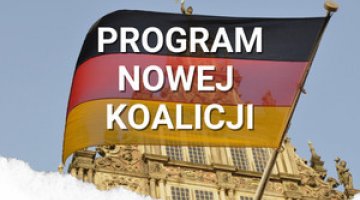Changes in the leadership of the German Left Party
On 15 May in Rostock the Left Party held a congress during which the new party authorities were elected. The change in the leadership of the party was meant to signal the consolidation of the party and emphasised its ability to enter into coalition with other parties. Once again the party did not manage to adopt a programme, which has a negative impact on the party's image and limits its capacity to form coalitions.
15 maja w Rostocku odbył się kongres Partii Lewicy, na którym wybrano nowe władze partii. Zmiana kierownictwa miała być sygnałem konsolidacji partii i podkreślić jej zdolność do wchodzenia w koalicje z innymi ugrupowaniami. Ponownie nie udało się natomiast przyjąć programu partii, co negatywnie wpływa na wizerunek ugrupowania i ogranicza jego zdolność koalicyjną.
Partia Lewicy powstała w 2007 roku z połączenia postkomunistycznej wschodnioniemieckiej PDS i zachodnioniemieckiego ruchu protestu WASG, założonego m.in. przez byłych członków SPD. Odzwierciedleniem tej dwoistości byli dotychczasowi przewodniczący partii – Oskar Lafontaine, były prominentny polityk SPD oraz Lothar Bisky, przewodniczący PDS. Na kongresie wybrano nowych przewodniczących: Gesine Lötzsch, pochodzącą z Niemiec wschodnich i bawarskiego polityka Klausa Ernsta. Zmiany kierownictwa, które objęły również stanowisko sekretarza wykonawczego partii, mają wpłynąć na poprawę wizerunku Partii Lewicy przedstawianej w mediach jako ugrupowanie anachroniczne, skłócone wewnętrznie i niestanowiące poważnej alternatywy dla pozostałych partii politycznych. Na takie postrzeganie partii wpływa również brak programu politycznego, który miał być przyjęty podczas zjazdu. Poszczególne frakcje partii od trzech lat nie są w stanie porozumieć się co do spójnego programu – kolejne głosowanie w tej sprawie odbędzie się dopiero w 2011 roku. Mimo niekorzystnego wizerunku Partia Lewicy staje się coraz bardziej znaczącą siłą polityczną w RFN. Jej przedstawiciele zasiadają obecnie już w 13 z 16 parlamentów krajów związkowych RFN i wchodzą w skład dwóch lokalnych rządów. Mimo braku konkretnego programu politycznego Partia Lewicy cieszy się na wschodzie Niemiec największą popularnością po chadecji, rośnie także poparcie dla niej na zachodzie kraju. <zawil>





